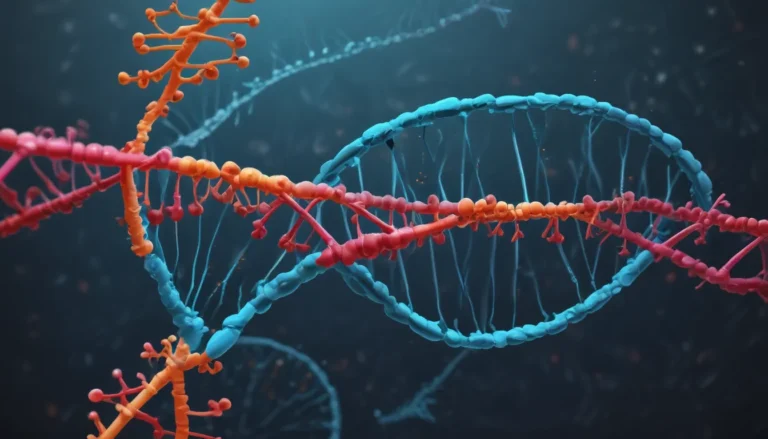A Note About Images: The images used in our articles are for illustration purposes only and may not exactly match the content. They are meant to engage readers, but the text should be relied upon for accurate information.
Welcome to the fascinating world of ecological modeling, where the realms of biology, ecology, and mathematics converge to unravel the intricate interactions within ecosystems. This powerful tool enables scientists to simulate and study the relationships between organisms, their environment, and the impacts of various factors on the ecosystem as a whole. In this comprehensive guide, we will delve into 19 astonishing facts about ecological modeling, covering its origins, applications, benefits, and challenges. Whether you are a biology enthusiast, an environmental science student, or simply curious about the wonders of nature, this article is tailored to provide you with a captivating insight into the realm of ecological modeling.
Understanding the Power of Ecological Modeling
Ecological modeling serves as a scientific approach that utilizes mathematical and computational techniques to simulate and predict ecological processes and interactions within ecosystems. By harnessing the capabilities of this tool, researchers can gain a deeper understanding of complex ecological systems and their responses to environmental changes.
Applications of Ecological Modeling
-
Studying Environmental Change: Ecological modeling aids in simulating various scenarios to predict the impacts of factors such as climate change, habitat loss, and pollution on different species and their interactions.
-
Conservation Planning: By simulating different conservation strategies, ecological modeling assists in creating effective management plans for preserving endangered species and protecting biodiversity.
-
Invasive Species Management: Ecological models help researchers understand the interactions between invasive species and native organisms, aiding in predicting their spread and impacts.
-
Disease Transmission Studies: Modeling disease-causing organisms, hosts, and the environment enables scientists to comprehend how diseases spread and develop strategies for control.
Benefits of Ecological Modeling
-
Quantifying Ecosystem Services: By evaluating the value of ecosystems in providing services like water purification and carbon sequestration, ecological modeling facilitates sustainable resource management.
-
Understanding Human Impacts: By integrating data on human activities into models, researchers can assess the effects of actions such as deforestation and urbanization on ecosystems.
-
Species Interactions: Ecological modeling unravels the dynamics of species interactions within communities, providing insights into the structure and stability of ecosystems.
Techniques in Ecological Modeling
From conceptual models to agent-based models and dynamic systems models, ecological modeling encompasses a variety of approaches to capture the intricacies of ecological systems. These models are based on empirical data and theoretical concepts, allowing for the simulation of realistic scenarios and predictions about future ecological trends.
Embracing the Challenges and Growth of Ecological Modeling
Challenges in Ecological Modeling
-
Complexity of Ecosystems: The inherent complexity of ecosystems poses challenges in modeling their dynamics accurately.
-
Data Uncertainty: Obtaining accurate data for model calibration and validation, especially for long-term projections, presents a significant challenge.
-
Interdisciplinary Integration: Integrating multiple disciplines such as biology, mathematics, and computer science is crucial for the success of ecological modeling.
Evolution of Ecological Theories
Ecological modeling plays a vital role in testing hypotheses and refining existing theories, leading to a deeper understanding of ecological phenomena and processes. It also contributes to predicting the effects of climate change on species distributions and assessing the effectiveness of conservation interventions.
Navigating Towards a Sustainable Future Through Ecological Modeling
Ecological modeling continues to shape our understanding of the natural world and guide our efforts towards a sustainable future. It aids in guiding conservation and management decision-making, providing policymakers and resource managers with valuable insights to ensure the long-term sustainability and health of ecosystems.
Conclusion: Harnessing the Potential of Ecological Modeling
In conclusion, ecological modeling stands as a versatile tool that has revolutionized the field of ecology. By accurately simulating ecological processes and interactions, it offers valuable insights into the complex dynamics of ecosystems. From predicting the impacts of climate change to informing conservation strategies, ecological modeling remains at the forefront of environmental research, guiding us towards a more sustainable future.
FAQs: Unveiling the Mysteries of Ecological Modeling
-
What is ecological modeling? Ecological modeling is a scientific approach that uses mathematical and computational techniques to simulate and understand the behavior and interactions of organisms and their environment.
-
How is ecological modeling useful? Ecological modeling helps predict and analyze the impact of various factors on ecosystems, aiding in decision-making for conservation, resource management, and policy development.
-
What types of ecological models are there? There are various types of ecological models, including food web models, population dynamics models, landscape models, and climate change models, each focusing on different aspects of the ecosystem.
-
Can ecological modeling predict the future of ecosystems? While ecological modeling provides insights into possible future scenarios, predictions should be interpreted with caution due to the simplifications of complex natural systems.
-
Who uses ecological modeling? Ecological modeling is utilized by scientists, researchers, policymakers, and conservationists to understand the impacts of human activities on ecosystems, predict environmental changes, and develop conservation strategies.
Exploring the Boundless Realms of Nature Through Ecological Modeling
As we continue to face environmental challenges, the significance of ecological modeling grows more pronounced. By combining technology with biological understanding, we can unravel the mysteries of our ecosystems and pave the way towards sustainable practices. Dive into the world of population dynamics, landscape ecology, and species interactions to uncover the intricate web of life that surrounds us. Together, let us embark on a journey of exploration, discovery, and conservation, guided by the compelling insights of ecological modeling.






